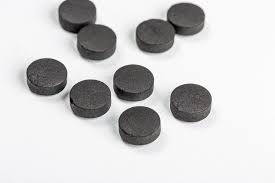
What is the best way to solve pigment black dispersion?
2024-01-16
Pigment black dispersions play a vital role in various industries including paints, coatings, inks and plastics. Proper dispersion of carbon black particles is critical to achieve optimal performance and desired characteristics in these applications. In this article, we will explore the factors that influence carbon black dispersion, discuss various dispersion techniques, and highlight important test methods for evaluating dispersion quality.
Mainly affects the dispersion of carbon black:
The dispersibility of carbon black is affected by many factors, including particle size and shape, surface chemistry, dispersion method, solvent selection and mixing conditions. Particle size and shape determine the surface area available for interaction, thereby affecting the dispersion process. The surface chemistry of carbon black particles affects their compatibility with different solvents and dispersants.
Carbon black dispersion technology:
To achieve effective carbon black dispersion, a variety of dispersion techniques can be employed. High-shear mixing involves subjecting the mixture to strong mechanical forces that promote particle separation and wetting. Ultrasonic treatment uses high-frequency sound waves to break down agglomerates and disperse carbon black particles. Bead milling involves grinding a mixture with small beads, providing a high-energy environment for dispersion. Three-roll milling uses shear between the rollers to disperse carbon black.
experiment method:
To evaluate the quality of carbon black dispersions, a variety of test methods can be used. Optical microscopy allows direct observation of dispersion quality, allowing visual inspection of particle distribution. Scanning electron microscopy (SEM) provides detailed images of dispersed particles, providing insight into their morphology and distribution. Transmission electron microscopy (TEM) provides higher resolution images and allows examination of individual particles. BET specific surface area analysis measures the surface area of carbon black particles, which can indirectly indicate the dispersion quality. Rheological measurements evaluate the flow behavior of a dispersion, providing information on its stability and viscosity.
Proper dispersion of pigment black is critical to achieving optimal performance in the application. Effective dispersion ensures uniform distribution of particles and enhances properties such as color development, UV resistance, electrical conductivity and mechanical strength. By considering factors such as particle size, surface chemistry, dispersion technology and appropriate testing methods, manufacturers can optimize the dispersion process and ensure consistent product quality.
In summary, pigmented carbon black dispersions play a vital role in various industries. Understanding the factors that influence dispersion, such as particle size, shape, surface chemistry, dispersion method, solvent selection, and mixing conditions, is critical to achieving optimal dispersion. The use of techniques such as high shear mixing, ultrasonic treatment, bead milling or three-roll milling can help achieve effective dispersion. Testing methods such as optical microscopy, SEM, TEM, BET analysis and rheological measurements provide valuable insights into dispersion quality. By prioritizing proper dispersion, manufacturers can unlock the full potential of pigmentary carbon black and deliver high-performance products in a variety of applications.
High quality carbon black manufacturer
If you want to get high-quality carbon black, but don’t know how to choose, Dery is your best choice. As a professional carbon black manufacturer, Dery can provide you with high-quality products and excellent services. Welcome to contact us for details Ordering information and services!

